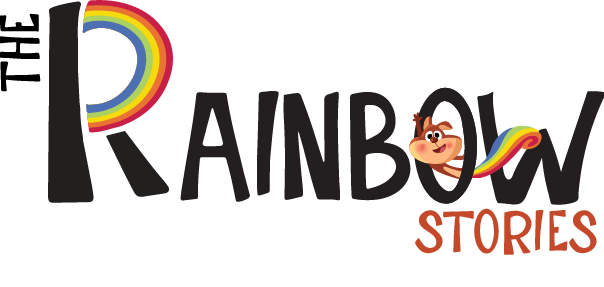A book cover is more than just a pretty picture—it’s the first impression your story makes on a potential reader. Whether you’re writing a heartwarming children’s story or a thrilling fantasy adventure, the right book cover design ideas can make or break your book’s success. A well-designed cover conveys mood, genre, and even a hint of the plot—without giving everything away.
In this post, we’ll explore genre-specific design inspiration and show you how to apply professional book cover design techniques that align with your story, especially for those working with children’s illustrations.
Why Genre Matters in Book Cover Design
Every genre comes with its own visual language. What works for a poetry collection wouldn’t suit a middle-grade adventure or a romance novel. Design elements like typography styles, color palettes, and imagery all send subconscious signals to the reader.
For instance, children’s book cover visuals tend to be bold, playful, and colorful, while thriller books use darker tones and mysterious shadows. Recognizing this helps ensure your book meets reader expectations from the first glance.
If you’re trying to decide whether to design from scratch or buy a template, you’ll want to read our guide on Custom vs. Pre-Made Book Covers for a smart comparison.
Fiction Book Cover Design Ideas
Fiction is one of the most creative genres for book covers. From abstract visuals to symbolic art, fiction covers offer room for innovation.
- Literary Fiction: Opt for minimalist cover design using metaphors, textures, and limited color palettes. A small symbol—like a paper crane or a broken glass—can hint at deeper meaning without clutter.
- Mystery/Thriller: Dark color schemes, bold fonts, and subtle details (like shadows or fog) set the mood. Using visual storytelling in covers with hints like a hidden figure or open door can be powerful.
- Romance: Light, warm colors and script fonts work well. Focus on emotional expressions or suggestive elements like intertwined hands or blooming flowers.
- Science Fiction: Think metallic textures, space elements, and high-tech typography. A strong visual hierarchy is key to creating a futuristic feel.
Non-Fiction Book Cover Ideas
Non-fiction covers need to look polished and informative while still catching attention. Here are some great approaches:
- Self-help: Clean layouts, bold sans-serif fonts, and solid colors. Icons or shapes often take center stage.
- Business: Use sharp lines, minimalist cover design, and modern fonts. Diagrams, arrows, or graphs can visually emphasize strategic thinking.
- Memoirs: Incorporate real or symbolic images from the author’s life. Handwritten fonts add a personal touch.
- History/Politics: Go for serious imagery, serif fonts, and historical references in the layout and colors.
No matter the genre, professional book cover design brings a polished look that builds credibility and authority—especially important in non-fiction.
Bring Your Children’s Story to Life with Magical Book Cover Design
Partner with talented Book illustrators who specialize in creating lovable Children Book Cover Design, characters and enchanting scenes for picture books and early readers.
Children’s Book Cover Design Inspiration
Designing covers for children’s books is an art in itself. You’re targeting both the kids and the parents who buy the books. That means bright, inviting visuals are essential.
- Use playful illustrations: Whimsical animals, magical creatures, and cartoon-style characters are a must. These elements create engaging children’s book cover visuals.
- Think about the age group: Board books for toddlers should use larger fonts and simple images. Middle-grade books can afford more complex illustrations and visual storytelling in covers.
- Color is king: Bold primary colors and vibrant palettes grab attention on shelves and online.
If you’re working with an illustrator, give them a mood board with examples of similar titles and fantasy book cover design ideas to guide the creative process.
For more creative resources and inspiration, don’t forget to browse The Rainbow Stories, where we share tips, tools, and examples for every genre.
Fantasy and Adventure Covers
Fantasy is a genre where cover design truly shines. It’s rich in symbolism, lore, and texture.
- Epic visuals: Include castles, magical creatures, or glowing weapons. These are iconic elements of fantasy book cover design ideas.
- Layered textures: Blending illustration with custom typography or symbols can give your cover a mysterious depth.
- Typography matters: The font style should match the magical or adventurous tone of the story.
For children’s fantasy books, combine fun elements with mythical themes—dragons with funny faces, enchanted forests with smiling animals, etc.
Poetry and Experimental Genres
Poetry books offer a chance to break design rules. Abstract visuals, simple lines, and metaphorical art work well.
- Minimalist cover design: One color, one symbol, and subtle textures can speak volumes.
- Typography as art: You can use the title font as part of the artwork—curved, stretched, or layered creatively.
- Emotion over information: Poetry covers don’t have to explain; they need to feel.
If you’re publishing a poetry book for kids, add playful elements—like watercolor splashes or paper-cut textures—to keep it creative and age-appropriate.
Tips to Make Your Book Cover Stand Out
Regardless of your genre, here are some proven tips for creating standout book covers:
- Blend mediums: Combine illustrations with photography for a unique look.
- Focus on typography: Unique typography styles can set the tone before a reader reads a word.
- Use color wisely: Color evokes emotion. For example, red for urgency, blue for calm, or yellow for joy.
- Tell a story: Every element on your cover should contribute to the overall visual storytelling in covers.
When in doubt, look at other successful books in your niche for book cover design ideas. Don’t copy—but get inspired.
Conclusion:
A strong cover does more than look good—it tells your story at a glance. Whether you’re diving into fantasy book cover design ideas or creating lovable children’s book cover visuals, understanding your genre is essential.
So, what is a good book cover design? It’s one that speaks directly to your audience, visually communicates the tone of your story, and stands out both online and on shelves.
If you’re doing it yourself, what is the best app to design a book cover? Programs like Canva, Adobe Express, and BookBrush offer templates that can get you started. However, for more advanced or illustrated covers—especially for children’s books—hiring a professional book cover design expert is worth every penny.

